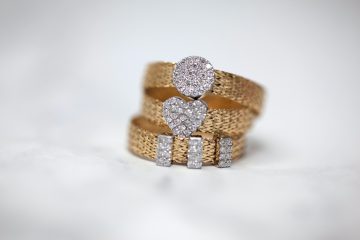Unlike stones, pearls do not come from the mineral kingdom but from mussels. Nevertheless, the pearl is probably the product that has been used in the longest history of mankind in the same way as gemstones. We know of at least 6,000 years of pearl trade!
There are two main types of pearls – real and cul and cultured pearls.
The real pearls can come from freshwater or from seawater (often called Oriental pearls). They are no longer fishing for these pearls and they are found almost exclusively in the used market today. Although it was possible to grow freshwater pearls in the 18th century, it was only in the early 1900s that the Japanese managed to grow pearls, then in seawater, which became so good that they out-competed the real pearls.
Different types of cultured pearls:
- Traditional Japanese pearls in seawater – 2-10 mm.
- Cultured Southern pearls – usually between 10 and 25 mm.
- Cultured Tahiti pearls, black, gray, and bronze.
- Cultured semi-pearls – sometimes called mabé.
- Cultured freshwater pearls, unfortunately, are often mistakenly called purely freshwater pearls – sometimes you hear the term biwa.
Of course, there are also many imitation pearls – such as Majorica or seashell pearls.
How to take care of your pearls
Wipe them occasionally after use with a damp linen cloth, handkerchief, etc., especially if you use spray, perfume, skin cream, strong medications.
Do not store the beads together with keys, coins, or other hard material in eg. handbag! Store the beads in linen cloth, jewelry box or other soft material, but not in cotton! The cotton wipes the percent moisture contained in the bead. Rearrange your pearl necklace once a year. Then the beads are cleaned and dust in the boreholes disappears. If you follow these tips, your pearl necklace will retain its beauty.



